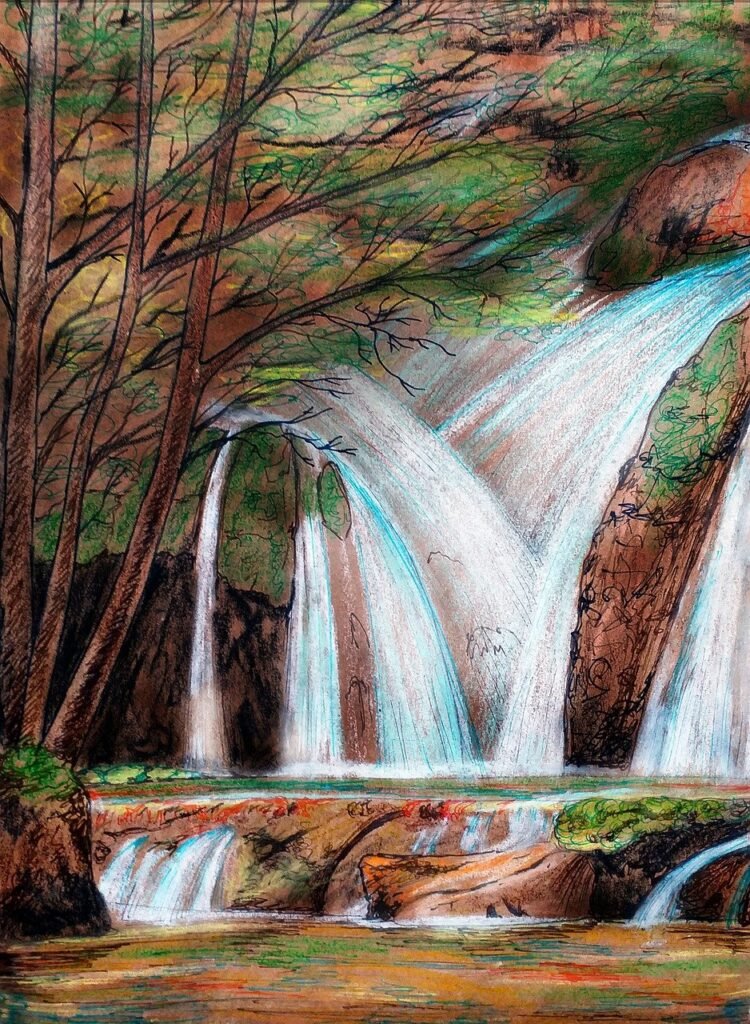Offline @ Campus — Bengaluru Students
Fees include materials.
24 sessions (45 minutes each. 2 Sessions in a day)— Flexible Timings (Weekday | Weekend)
Skip to content
Two Learning Options:
1. @ Bangalore Campus
2. Online Live Interactive


15,000+ Students
Trained Worldwide
Structured Courses
for All Levels
Expert Mentors
Global Exposure

The Soft Pastels Drawing Course is designed to explore the creative possibilities of adding depth and dimension to artwork through various texturing techniques. In this course, students explore the vibrant and blending capabilities of soft pastels to create colorful, textured artworks, focusing on layering, blending techniques, and adding depth to various subjects.
For payment through RazorPay – Credit Card / Debit Card & Net Banking – India & International.
Fees include materials.
24 sessions (45 minutes each. 2 Sessions in a day)— Flexible Timings (Weekday | Weekend)
24 Sessions (45 minutes each. 2 Sessions in a day)(Weekday | Weekend)
Live online classes & Free Video Tutorials worth Rs. 999.
24 Sessions (45 minutes each. 2 Sessions in a day)(Weekday | Weekend)
Global timings & Free Video Tutorials worth $12 — join from anywhere.
Unlock your passion for art and inspire the next generation of artists with our Soft Pastels Drawings! Gain expert knowledge, hands-on experience, and creative teaching techniques to build a fulfilling career in art education. Whether you’re a seasoned artist or a newcomer, this course equips you with the skills to lead vibrant, engaging art classes. Start your journey to becoming a certified art teacher today!
Choose the learning path that suits you best! Opt for Classroom Classes for hands-on, face-to-face learning, Online Interactive sessions for real-time engagement from anywhere, or eLearning for a flexible mix of video tutorials and live classes. The choice is yours to create your perfect art journey!
FUNDAMENTALS TO INTENSIVE
The Soft Pastels Drawing Course is designed to explore the creative possibilities of adding depth and dimension to artwork through various texturing techniques. In this course, students explore the vibrant and blending capabilities of soft pastels to create colorful, textured artworks, focusing on layering, blending techniques, and adding depth to various subjects.
FUNDAMENTAL TO INTENSIVE
36 Sessions – Each Session is of 45 minutes. Validity: 3 months
Introduction to Soft Pastels and Basic Techniques
Drawing Simple Shapes and Forms
Exploring Color Blending and Transitions
Landscape Basics – Sky and Water
Drawing Nature – Trees and Foliage
Still Life – Fruits and Flowers
Creating Texture and Detail
















For details about these courses visit home page
Completing the Textured Painting Course opens up unique career opportunities for artists skilled in creating dynamic, tactile artworks.
You can pursue roles such as:
This course equips artists with specialized skills that can be applied in various creative fields, particularly where texture and dimension are valued.
A: The course duration is typically three months. The student has the flexibility to complete the course faster if they take more classes. Check with the programme office for the schedule and availability of slots.
There are no specific prerequisites. The course is open to beginners as well as those with some experience in painting.
Interested candidates need to fill out an online application form and submit it along and pay the fees. If you want to talk to the Programme Office, kindly call: +91 9902739994 (9.30 am to 6.00 pm)
Please refer above for Special Offer Fees! Limited Period Offer
Yes. You can. Students from any part of the world can take these courses. Qualified Art Teachers from India currently handle the courses.
We have students from 18+ countries worldwide. Kindly check the timing and schedule with the Programme Office: +91 9902739994
No. Students should bring their supplies as well. A list of recommended materials will be provided upon enrollment.
Yes, students will be given assignments to practice techniques learned in class. These are crucial for skill development.
Yes, students will receive free Study Material on certain topics of Fundamentals of Sketching and Drawing. These lessons cover basic techniques in line drawing, shading, perspective, and more.
The free lessons will be available online through our learning portal. Students will receive login details upon enrollment.
Yes. The same course is available in Live Online Interactive mode
This certificate can help you enhance your portfolio, prepare for advanced art studies, or pursue a hobby more seriously. It can also lead to opportunities in freelance Drawings, gallery exhibitions, commissioned work, and art instruction.
Yes. You can do more advanced sketching as much you want. Please contact the Programme Office (+91 9902739994) for the same
Currently, we are offering a hefty discount for this course. Please refer to pricing
You can reach the admissions office via email at konsultcreative@gmail.com or call us at +91 9902739994. Our office hours are Monday to Saturday, 9 AM to 6 PM.
We offer three learning options:
Yes, you can switch between learning modes if needed, based on availability and scheduling.
The eLearning option offers a blend of pre-recorded video tutorials and scheduled live classes. You can learn at your own pace through the video lessons, and join live classes for real-time feedback, guidance, and interaction with instructors.
Yes, the video tutorials are available 24/7, allowing you to access them anytime that suits your schedule. You can revisit lessons as often as you like during the course duration.
No special software is required. The course is accessible through a standard web browser. You will, however, need a stable internet connection and access to Google Meet for live classes.
Absolutely! The eLearning option is designed to cater to all skill levels, and beginners can benefit from both the structured video lessons and the support of live classes for personalized guidance.

The Textured Painting Course by Konsult is meant to give beginners a strong foundation in Visual Art. Students are introduced to the basics of Textured Painting and move up to advanced techniques aided by practical work.

Contents